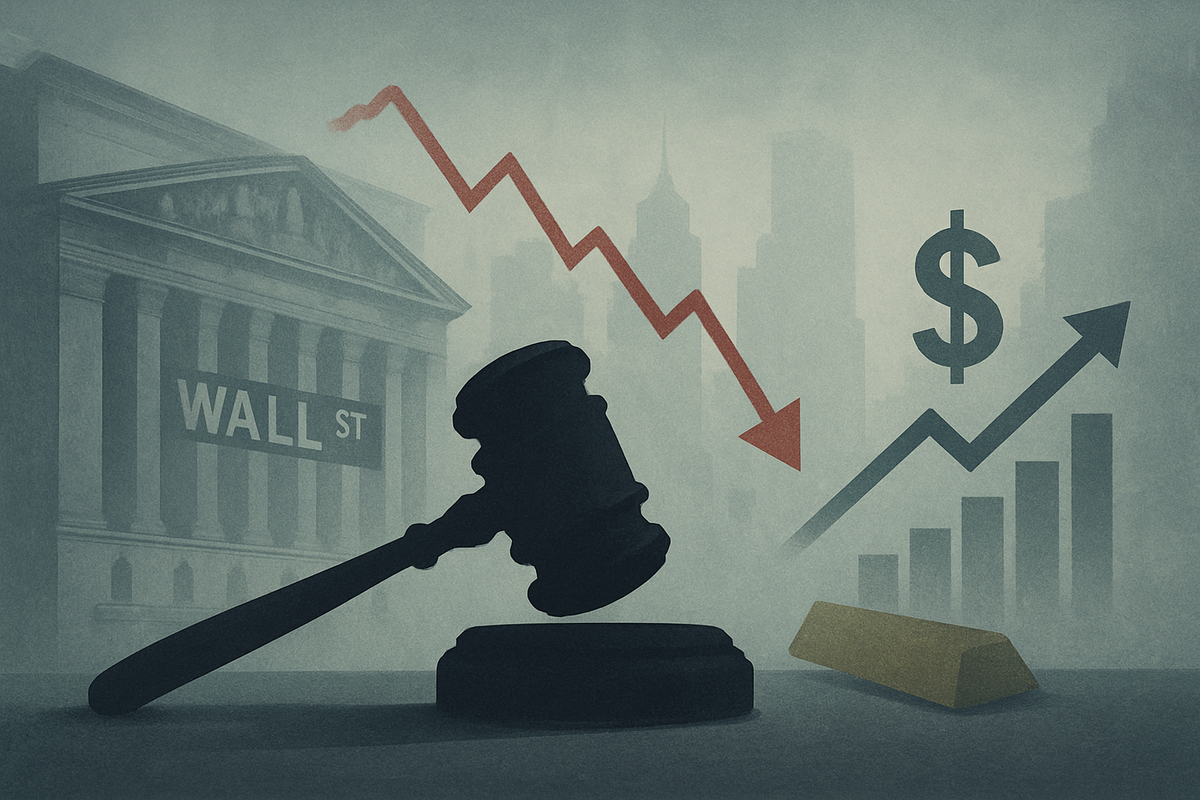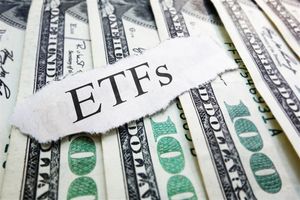
Wall Street experienced a significant downturn as Federal Reserve Chair Jerome Powell delivered a sobering message, casting considerable doubt on the certainty of a December interest rate cut. This unexpected caution from the Fed's top official sent ripples through global financial markets, with major indices sinking, the US dollar strengthening, and commodity prices, particularly gold, retreating from earlier gains. The statement has forced investors to recalibrate their expectations for monetary policy, signaling a potentially longer period of higher interest rates than previously anticipated.
The immediate aftermath saw a wave of disappointment-driven sell-offs as market participants unwound positions based on prior assumptions of imminent monetary easing. The Fed's less dovish stance has amplified concerns about economic growth prospects, especially for rate-sensitive sectors, and has introduced a fresh layer of uncertainty into an already complex economic landscape. The implications extend beyond equities, influencing currency valuations and the broader outlook for inflation and investment strategies.
Powell's Prudence Puts Markets on Edge
The market's anticipation for a December rate cut had been building, fueled by a series of economic indicators and previous Fed communications that hinted at a potential easing cycle. However, during a highly anticipated press conference following the latest Federal Open Market Committee (FOMC) meeting, Chair Powell explicitly stated that a December rate cut was "not a foregone conclusion" and that the committee would remain data-dependent, closely monitoring inflation and employment figures before making any further moves. This statement effectively dashed hopes for an immediate pivot to a more accommodative monetary policy.
The timeline leading up to this moment saw several data releases indicating a cooling, but still resilient, economy. Inflation, while moderating from its peak, remained stubbornly above the Fed's 2% target, and the labor market, though showing some signs of softening, continued to be robust. These mixed signals likely contributed to the Fed's cautious stance, prioritizing the long-term goal of price stability over immediate market demands for lower borrowing costs. Key players involved include the Federal Reserve Board members, who collectively decide on monetary policy, and various market participants—institutional investors, hedge funds, and individual traders—who react to these policy shifts.
Initial market reactions were swift and decisive. The Dow Jones Industrial Average (DJIA), S&P 500 (SPX), and Nasdaq Composite (IXIC) all registered significant declines, with technology and growth stocks, often more sensitive to interest rate expectations, bearing the brunt of the sell-off. The US Dollar Index (DXY) surged as investors flocked to the greenback, attracted by the prospect of higher-for-longer rates. Conversely, gold prices, which typically benefit from lower interest rates and a weaker dollar, saw a sharp decline, reflecting the diminished appeal of non-yielding assets in a rising rate environment. The volatility underscored the market's sensitivity to central bank guidance and the profound impact of unexpected hawkish signals.
Corporate Fortunes Hinge on Rate Trajectory
The Fed Chair's cautious tone on a December rate cut will undoubtedly create winners and losers across the corporate landscape, forcing companies to adapt their financial strategies and operational outlooks.
Potential Losers:
- Real Estate and Construction: Companies heavily reliant on borrowing, such as homebuilders like D.R. Horton (NYSE: DHI) and commercial real estate developers, will face sustained pressure from higher mortgage rates and financing costs. This could dampen demand for new homes and commercial properties, impacting sales and profit margins.
- High-Growth Technology Companies: Many technology firms, especially those not yet profitable, often rely on cheap capital for expansion and innovation. A prolonged period of higher rates increases their borrowing costs and makes future earnings less valuable, potentially impacting valuations of companies like Snowflake (NYSE: SNOW) or smaller, emerging tech players.
- Leveraged Companies: Businesses with significant debt burdens will see their interest expenses rise, eating into profits. This includes various sectors, but particularly those that have taken on substantial leverage in a low-interest-rate environment.
- Consumer Discretionary: Higher borrowing costs and potentially slower economic growth could lead consumers to cut back on non-essential spending, hurting retailers and consumer goods companies like Starbucks (NASDAQ: SBUX) or Nike (NYSE: NKE).
Potential Winners (or less negatively impacted):
- Banks and Financial Institutions: A higher interest rate environment generally benefits banks like JPMorgan Chase (NYSE: JPM) and Bank of America (NYSE: BAC) as their net interest margins—the difference between what they earn on loans and pay on deposits—tend to widen.
- Value Stocks and Industrials: Companies with stable cash flows, less reliance on debt, and strong balance sheets, often found in traditional industrial sectors or utilities, may be more resilient. Investors might rotate out of growth stocks into these "safer" assets.
- Energy Companies: Commodity price movements are complex, but if a stronger dollar indicates a flight to safety or if global demand remains robust despite rate concerns, energy giants like ExxonMobil (NYSE: XOM) could see stable or rising revenues, though the direct link to Fed rates is less direct than other sectors.
- Companies with Strong Cash Reserves: Businesses like Apple (NASDAQ: AAPL) or Microsoft (NASDAQ: MSFT) with substantial cash on hand are less dependent on borrowing and can even benefit from higher interest earned on their reserves. They also have the flexibility to acquire distressed assets or invest during a downturn.
The extended period of higher rates will necessitate strategic pivots, with companies focusing on cost control, debt reduction, and efficient capital allocation. Those with robust balance sheets and adaptable business models will be better positioned to navigate the challenging economic currents ahead.
Broader Implications and Historical Parallels
The Fed Chair's unexpected reticence regarding a December rate cut extends far beyond immediate market fluctuations, embedding itself within broader industry trends and potentially reshaping the economic landscape. This event underscores a persistent theme: central banks globally are grappling with the delicate balance of taming inflation without triggering a severe recession. The Fed's current stance suggests a continued prioritization of inflation control, even at the risk of slower economic growth. This fits into a broader trend of central banks maintaining a tighter monetary policy for longer than initially anticipated, a sentiment echoed by other major central banks still battling elevated price pressures.
The ripple effects are substantial. For competitors and partners, a sustained higher interest rate environment means increased costs of capital, which can stifle investment, mergers, and acquisitions. Smaller businesses and startups, often more dependent on external financing, may find it harder to secure loans or attract venture capital, potentially leading to consolidation or slower innovation in some sectors. Globally, a stronger US dollar, a direct consequence of the Fed's hawkish tone, makes US exports more expensive and imports cheaper. This could impact the trade balances of countries heavily reliant on trade with the US and put pressure on emerging market economies with dollar-denominated debt.
Regulatory and policy implications are also significant. A higher-for-longer rate environment could intensify calls for fiscal prudence from governments, as servicing national debt becomes more expensive. Regulators might also increase scrutiny on financial institutions to ensure they are adequately capitalized to withstand potential economic slowdowns or credit defaults. Historically, periods of unexpected central bank hawkishness, particularly when markets have priced in a different outcome, have often led to increased market volatility and, in some cases, economic slowdowns. Comparisons can be drawn to various points in history where the Fed's stance diverged from market expectations, such as during periods of persistent inflation in the late 1970s and early 1980s, or more recently, during the post-2008 recovery when the Fed signaled an end to quantitative easing. Each instance highlighted the market's deep reliance on clear central bank guidance and its sensitivity to any perceived deviation.
Navigating the Path Ahead: Scenarios and Strategic Shifts
Looking ahead, the Fed Chair's statement ushers in a period of heightened uncertainty, presenting both challenges and opportunities for investors and businesses alike. In the short term, market volatility is likely to persist as participants digest the implications of a potentially prolonged period of higher interest rates. Investors will be scrutinizing every economic data release—particularly inflation reports and labor market statistics—for clues about the Fed's next move. Any signs of persistent inflation or unexpected strength in the economy could further solidify the Fed's cautious stance, while a significant downturn could reignite calls for rate cuts, albeit from a higher starting point.
Long-term possibilities include a recalibration of corporate strategies towards greater financial discipline, reduced leverage, and an increased focus on profitability over aggressive growth. Companies may prioritize organic growth and efficient capital allocation rather than relying on cheap debt for expansion. This environment could also favor companies with strong balance sheets and robust free cash flow, as they are better positioned to weather economic headwinds and potentially acquire weaker competitors.
Potential strategic pivots include a shift in investment portfolios from growth-oriented assets to value stocks, dividend payers, and sectors traditionally less sensitive to interest rate fluctuations. Market opportunities may emerge in defensive sectors, commodities that benefit from supply constraints rather than speculative demand, and potentially in distressed assets if a prolonged high-rate environment leads to corporate struggles. Conversely, challenges will include maintaining profit margins in the face of higher borrowing costs and potentially softer consumer demand. Potential scenarios range from a "soft landing" where inflation gradually subsides without a severe recession, to a "hard landing" characterized by a more significant economic downturn if the Fed's policy proves too restrictive.
A New Reality for Financial Markets
The Federal Reserve Chair's announcement, signaling uncertainty about a December rate cut, marks a pivotal moment for financial markets, fundamentally shifting expectations and ushering in a new reality for investors and businesses. The key takeaway is clear: the era of readily available, cheap capital may be firmly in the rearview mirror for the foreseeable future, and the Fed remains steadfast in its commitment to bringing inflation under control, even if it means enduring a period of higher interest rates for longer than many anticipated.
Moving forward, the market will likely remain highly sensitive to economic data, with each inflation report and jobs number having the potential to sway sentiment and asset prices. Investors should brace for continued volatility and adopt a more discerning approach to portfolio construction. The "buy the dip" mentality that often characterized previous cycles may need to be re-evaluated in an environment where interest rates are not guaranteed to fall quickly.
The lasting impact of this event could be a more disciplined approach to capital allocation across industries, a renewed focus on fundamental value, and a more robust financial system less reliant on ultra-low interest rates. What investors should watch for in the coming months are not just the Fed's explicit statements, but also the subtle shifts in economic indicators that will ultimately guide monetary policy. Pay close attention to core inflation metrics, wage growth, and unemployment rates, as these will be the primary determinants of whether the Fed maintains its hawkish stance or eventually signals a pivot towards easing. The path ahead promises to be challenging, but also one that will reward prudence, adaptability, and a deep understanding of the evolving economic landscape.
This content is intended for informational purposes only and is not financial advice





